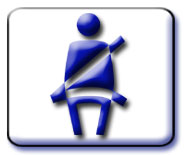In September 2002, NHTSA formed four Integrated Project Teams (IPTs) to conduct an in-depth review of four priority areas: 1) Safety Belt Use; 2) Impaired Driving; 3) Rollover Mitigation; and 4) Vehicle Compatibility. A year later, an IPT was formed to address a fifth priority area, which is closely related to all of the others:
5) Improving Traffic Safety Data. All five of these teams were chartered to support the agency's strategic planning work by using comprehensive, science and evidence-based analyses to identify innovative solutions and recommend effective strategies in their respective issue areas.
 |
-
- Traffic Safety Data
(PDF version also available)
- NHTSA has made improving traffic safety data one of the agency’s highest priorities. While motor vehicle crashes are the leading cause of death and disability in the United States for people ages 4 through 33, traffic safety data is the primary source of knowledge to address the multiple causes of these crashes, whether a result of the traffic safety environment, human behavior, vehicle performance, or combinations of these. Good data is required for effective decision-making, development of policies and counter-measures. This means that the data must be timely, accurate, complete, uniform, integrated and accessible. In order to improve data, however, federal and state agencies which collect traffic safety data must work collaboratively and proactively in the following five areas: Coordination and Leadership, Data Quality and Availability, Electronic Technologies and Methods, Uniformity and Integrated Data; Facilitated Data Use (including training). This report lists NHTSA's own initiatives in each of these areas, as well as those of other U.S.DOT modes and recommendations for the states as well as for federal agencies.
|
|
|
-
- Impaired
Driving
- As a symptom of the larger
substance abuse problem, impaired driving leaves thousands dead and
injured each year, with a cost of billions to the nation. In 2002 alone,
there was an estimated 17,419 alcohol-related motor vehicle deaths.
Embedded within issues of alcoholism, underage and problem drinking,
drug abuse, and illegal sale of alcohol and other drugs, the solutions
to the impaired driving problem are complex, wide-ranging and expensive.
NHTSA has made finding solutions to reduce impaired driving one of the
agency’s highest priorities. This document describes the safety
problem represented by impaired driving and provides strategies the
agency plans to pursue decreasing impaired driving - thereby saving
lives. In addition to the full agenda of highway safety issues, safety
belt use, rollover mitigation and vehicle compatibility are the other
priority issues set by NHTSA to reduce the occurrence and consequences
of motor vehicle fatalities and injuries.
|
|
|
-
-
Initiatives to Address Safety Belt Use
PDF version also available
- The following report presents an in-depth look at one
of the most significant safety issues impacting highway safety and the success of NHTSA’s
mission – safety belt use. This document describes the safety problem represented by the failure
to use safety belts and provides strategies the agency plans to pursue in increasing safety belt use,
thereby saving lives. In addition to the full agenda of highway safety issues, impaired driving,
rollover mitigation and vehicle compatibility are the other priority issues set by NHTSA to reduce
the occurrence and consequences of motor vehicle fatalities and injuries.
|
|
|
-
- Vehicle
Compatibility
- Recent sales and registrations
of light trucks and vans (LTVs), including sport utility vehicles(SUVs)
have steadily increased as a percentage of the passenger vehicle fleet,
with LTVs representing 50 percent of new vehicle sales in 2001 and 37
percent of vehicle registrations. Consequently, this has led to an increased
number of fatalities to car occupants who are struck by LTVs. This increase
in passenger car fatalities has occurred even while the overall fatalities
for the U.S. fleet has stabilized or decreased over the past several
years. Therefore, NHTSA has made vehicle compatibility one of the agency’s
highest priorities. Initiatives the agency plans to pursue in improving
vehicle compatibility are included in this report.
|
|
|
-
- Rollover
Mitigation
- Many factors contribute
to the occurrence of rollover crashes. Rollover crashes closely
correlate with unsafe and reckless driving behaviors, poor road
design and vehicle type. Certain categories of vehicles, such as
sport utility vehicles and small pickup trucks, are more prone to
rollover than other classes of light motor vehicles. In recognition
of the increasing rollover problem, NHTSA has also made finding
solutions one of the agency’s highest priorities. Initiatives
the agency plans to pursue in reducing deaths and injuries attributable
to rollover crashes are included in this report.
|
|







![]()
